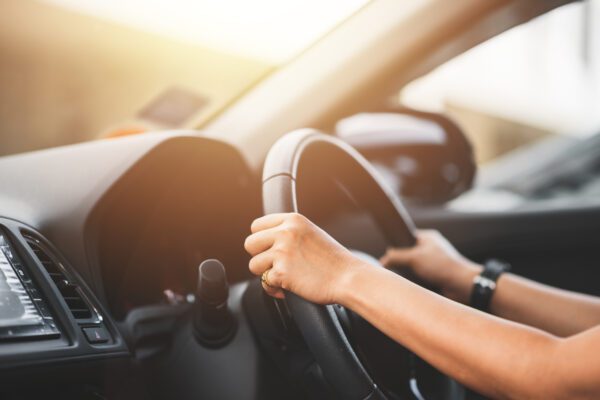Nonprofit employees are regularly exposed to many risks on the job – but it’s also important to consider the risks they take on the road. If your employees get into an accident while driving their personal vehicles for work, your agency is in jeopardy of financial liability. But you can reduce your risk to loss by familiarizing yourself with the basics of non-owned autos and nonprofit risk management.
In the insurance industry, the term “non-owned autos” applies to vehicles that an agency does not own, including employees’ vehicles that are used in connection with the business.
Most auto policies include coverage for non-owned autos on an “excess” basis, meaning that the employee’s insurance is “primary” (pays first) and the business’ non-owned auto policy is “excess” (pays second).
You might not even be aware of your agency’s non-owned auto exposure. Any time an employee operates their own vehicle for agency business, it is considered to be a “non-owned auto” exposure for the agency. Although the agency does not own the vehicle, the fact that the employee is operating the vehicle for business purposes puts the agency at risk for non-owned auto liability. Non-owned auto exposures arise in many scenarios, including but not limited to:
- Driving from a CILA to Administrative offices for training
- Taking deposits to the bank
- Picking up lunch for an office event
- Driving in-between clients’ homes while offering home-based services
- Running agency errands
WHY NON-OWNED AUTO IS A LIABILITY ISSUE
- How Construction Can Attract Workers in Today’s Labor Shortage– If an employee is driving for agency business and gets into an accident, the agency is liable for damage in excess of the employee’s personal auto policy limits.
- Workers’ Compensation – If an employee is injured in an auto accident during agency time, the claim will be included in the experience modification calculation and will negatively impact claim history, increasing premiums.
- Negligent Entrustment – This is a cause of action in tort law that arises where one party (the entrustor) is held liable for negligence because they negligently provided another party (the entrustee) with a dangerous instrumentality, and the entrusted party caused injury to a third party with that instrumentality. For example, if an agency hires an employee with a poor driving record who causes an accident, the agency could be liable for punitive damages because they were grossly negligent. Be sure to check for proof of insurance and employee driving records at least annually.
- Distracted Driving & Cell Phones – The number of distractions that employees have on the road today are more than ever. The majority of drivers on the road today seem to be distracted by something, most of the time it’s cell phones, but also includes GPS systems, radios or anything that may divert a driver’s attention from the road. Your employees are likely part of this epidemic.
NONPROFIT RISK MANAGEMENT: HOW TO PROTECT YOUR AGENCY
Non-owned auto exposure should be a key consideration in any nonprofit risk management plan. The two easiest and most effective ways to protect your agency are to purchase a non-owned auto insurance policy and to create a program for employees that drive their own vehicles on agency business. Here are important parts of a successful non-owned auto program:
- Develop a system to identify those employees that do – or could drive on behalf of the business, in their own vehicles
- Require employees to carry personal insurance on their vehicles (at a minimum, $500,000 in liability is recommended)
- Obtain proof of employees’ personal insurance coverage annually
- Ask employees to sign MVR authorization forms (to avoid privacy law issues), allowing your agency to pull their Motor Vehicle Records
- Run Motor Vehicle Records annually, or sign up for an employer notification program, if available in your state
- Establish driver eligibility guidelines, which state the number and type of violations or accidents that disqualify employees from driving eligibility
- Implement and enforce a vehicle use program, which includes a signed consent form that outlines acceptable practice for driving on agency business.
- Maintain hired and non-owned auto liability and umbrella liability policies
- Periodically audit files for proof of maintained insurance and acceptable driving records
- Educate your employees on safe driving, to include a discussion about distracted driving, defensive driving, following proper distance and driving in weather
With the abundance of industry-specific exposures facing companies today, there is little time to devote to general issues. Addressing your non-owned auto exposure in this way will quickly and inexpensively free up more time to devote to other issues facing the agency while providing peace of mind that your financial exposure is kept to a minimum.
CONCLUSION
Your employees drive non-owned autos are being driven in agencies every day, so it’s crucial to solidify your nonprofit risk management plan. Taking these simple steps will help keep your employees safe, while reducing your future insurance premiums and your overall risk levels. For additional information on how to stay covered, reach out to a member of The Horton Group’s NonProfit team.
Material posted on this website is for informational purposes only and does not constitute a legal opinion or medical advice. Contact your legal representative or medical professional for information specific to your legal or medical needs.



